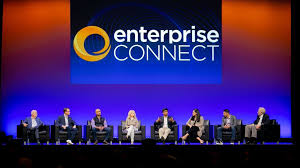What is voice recognition and how does it work?

Time to read: 5 minutes
What is voice recognition and how does it work?
Voice recognition technology is reshaping the way we interact with devices. No longer a thing of science fiction movies, this innovative technology allows machines to understand and respond to our spoken words and vocal characteristics.
Voice recognition is vital for businesses and customers because it enhances convenience and efficiency. For businesses, it streamlines operations by enabling hands-free interactions and improving customer service with accurate responses to voice commands. It also personalizes users’ experiences, tailoring services to individual preferences. For customers, it offers an easy, intuitive way to engage with technology, reducing the friction of traditional interfaces.
As we move towards a hands-free world, voice recognition technology offers the promise of convenience and efficiency, empowering users to communicate with technology in the most natural way possible—through their voices.
What is voice recognition?
Voice recognition is a technology that allows systems to identify and understand spoken words from a particular individual. Unlike speech recognition, which interprets collective spoken commands, voice recognition focuses on recognizing the unique vocal characteristics of a specific person. This enables personalized user interactions, such as logging into accounts, accessing secure information, and tailoring services to an individual's preferences. It can be used for securing devices, creating customized user experiences, and making interactions with technology more natural.
Voice recognition vs. speech recognition
Voice and speech recognition are among the hottest topics in tech today. And while similar in names—which may lead to confusion—there’s an essential difference between them. Built on some of the same underlying technology that enables the computer to digitally analyze analog sound, each serves a different purpose.
In short, speech recognition enables a computer to receive and interpret verbal commands from any user, whereas voice recognition tailors the interface to a specific user’s voice. This serves several purposes. For example, security: bad actors can’t use speech recognition to compromise a system when only voice commands from an authorized user are recognized and obeyed.
How does voice recognition work?
The ability of the human brain to interpret speech has long fascinated linguists. With the mechanisms that make this possible still shrouded in mystery, imagine how difficult it must be to develop a computer system to perform the same task. Yet, computer engineers have accepted this challenge since the earliest days of computing.
At its most basic level, speech recognition converts sound into a digital signal, which the computer system can then analyze to identify particular sounds—then words—and guess at a probable meaning. It allows customers to, for instance, interact with an automated system to meet their needs until a human assistant becomes available.
Voice recognition technology goes a step further. To set up a voice recognition system, a user offers multiple samples of their voice to a computer system that creates a profile or template of it. A user might say a command in different tones of voice or at different volumes to provide the system with various samples.
With this profile constructed, the computer determines whether the speaker is a recognized user or an unknown interloper. Voice recognition can also offer substantial benefits in terms of accuracy, as the system accounts for the distinctive features of a user’s speech patterns.
Advancements in voice recognition software
The challenges of voice recognition implementation have forced computer scientists to develop original and inventive solutions to enable computer systems to recognize and respond to human speech. Older solutions often used a hidden Markov model (HMM), in which the program decodes a word from speech through an analysis of phonemes using probability theory. This method proved highly effective for many years.
More recently, scientists have begun to use neural networks and deep learning in their voice recognition technology—the same tech that powers so many of the artificial intelligence (AI) wonders revolutionizing various industries. This advance is possible thanks to the massive amounts of data now available for analysis.
Neural networks may also utilize HMMs but more commonly use connectionist temporal classification (CTC), which analyzes speech not yet broken down into phonemes. There’s a lot of complicated math involved—if you haven’t studied linear algebra, you’ll be lost—but suffice it to say that CTC can be faster than HMM.
While both methods have demonstrated utility, modern computer engineers may favor neural networks because the processing time is much faster than with HMMs. As speed is crucial for enhancing user experience, an AI voice recognition app built with neural networks offers a better solution than HMMs.
Why use voice recognition?
Customers demand convenience. And what could be more convenient than using your voice to surf the web, place orders, or receive technical support? Because we speak before we learn to read, let alone use a mouse and keyboard, interfaces that recognize a voice might connect to customers more intuitively.
There’s no reason to think that customers will respond to this new technology with trepidation and uncertainty, as 53% of customers surveyed said they feel natural and at ease with their voice recognition-enabled devices. When customers multitask with voice recognition, they also feel cared for and supported—even when they know that it’s just a machine programmed to do its job.
Of course, there are questions about how accurate voice recognition is—we can’t ignore the high-profile examples of speech recognition gone wrong. But with a hardy solution, customers can usually get the system to do what they want without much difficulty.
Concerns about the potential of advanced AI to subvert voice recognition technology are valid as well. Think of it like an arms race: one strain of AI wants to subvert verification technology while the other tries to find ways of preventing that subversion. Only time will tell which wins out—but for most use cases, voice recognition is still secure.
Use cases for voice recognition
If you’re not sure how or where voice recognition technology might fit into your business, here are a few examples to get you started.
Biometric security measures: Voice falsification of an authorized user is far more difficult than hackers discovering a password or stealing a phone used in two-factor authentication.
Transcriptions: Voice recognition can determine where a speaker’s dialogue begins and ends to convert speech to text. It can even identify specific speakers in an extended conversation—for example, in a roundtable discussion or a panel with multiple speakers.
Accessibility: Voice transcription in real time can add closed captioning for individuals with a hearing impairment so virtual events are more accessible.
Customer service: Voice recognition can enhance speech recognition to serve as a personalized digital assistant. For instance, a website visitor can access a chatbot that can pull up account information or recall past interactions. Based on an individual’s unique voice, the technology can offer personalized product recommendations, answer questions in a relevant way, or even accept payments.
Try Twilio's Speech Recognition API
Voice recognition offers so many benefits for your business—but how do you put it into practice?
Twilio's Speech Recognition API helps you implement voice recognition technology with features like real-time transcription, voice search, and interactive voice response (IVR) capabilities that allow callers to engage with an automated menu that addresses their needs directly.
A new environment brings new demands. As you navigate a landscape of shifting consumer expectations, we’re here to assist with flexible products that match your needs. Get started today and unlock the potential of voice recognition technology.
Related Posts
Related Resources
Twilio Docs
From APIs to SDKs to sample apps
API reference documentation, SDKs, helper libraries, quickstarts, and tutorials for your language and platform.
Resource Center
The latest ebooks, industry reports, and webinars
Learn from customer engagement experts to improve your own communication.
Ahoy
Twilio's developer community hub
Best practices, code samples, and inspiration to build communications and digital engagement experiences.


